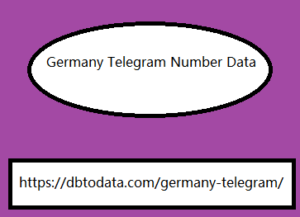Post by kmstfatema on Mar 9, 2024 5:33:28 GMT
How many times, while browsing the Internet, do you visit pages covered in flashy advertisements, pop-ups and banners that compromise the online experience? The development of the so-called "banner blindness" by users has led advertisers to search for new solutions to share paid content and reach new potential customers. Among the new online advertising models, native presents itself as one of the most promising possibilities , but what differentiates it from all its alternatives? In today's article we will see examples, strengths and most used formats of native advertising, sharing some examples that help to better understand its characteristics.
Native advertising: integration is its strength Germany Telegram Number Data To learn more about native advertising, first of all, you need to understand what its objective is: capturing the attention of the potential consumer with content that is completely within the browsing context . Later we will bring examples of different adverts for native advertising, but for now let's focus on what distinguishes this form of advertising from others. If from a certain point of view native can be associated with a broader concept of content marketing, especially with regards to the methods of seeking the user's attention, its primary purpose is still promotional, not informative. The aforementioned " banner blindness ", i.e. the selective attention that users have developed towards " interruption marketing " content, is put aside with native advertising, without negatively influencing the browsing experience .

The direct result of this strategy is an increase in the percentage of clicks and interactions on the advert , optimized for a specific target and positioned in such a way as to attract the reader's attention, inviting him to click once he has finished consulting the contents of his interest. What are the most used formats? Having to adapt to the site on which it is hosted, native advertising content is generally made up of a few elements, which are always present. The most classic format includes a box measuring 300x250, consisting of an image, a title below it and, occasionally, a mention of the advertiser's site. From the point of view of page positioning, the leading format is undoubtedly the one in which the sponsored content appears in a box at the end of the article , grouped together in the form of "Recommendation".
Native advertising: integration is its strength Germany Telegram Number Data To learn more about native advertising, first of all, you need to understand what its objective is: capturing the attention of the potential consumer with content that is completely within the browsing context . Later we will bring examples of different adverts for native advertising, but for now let's focus on what distinguishes this form of advertising from others. If from a certain point of view native can be associated with a broader concept of content marketing, especially with regards to the methods of seeking the user's attention, its primary purpose is still promotional, not informative. The aforementioned " banner blindness ", i.e. the selective attention that users have developed towards " interruption marketing " content, is put aside with native advertising, without negatively influencing the browsing experience .

The direct result of this strategy is an increase in the percentage of clicks and interactions on the advert , optimized for a specific target and positioned in such a way as to attract the reader's attention, inviting him to click once he has finished consulting the contents of his interest. What are the most used formats? Having to adapt to the site on which it is hosted, native advertising content is generally made up of a few elements, which are always present. The most classic format includes a box measuring 300x250, consisting of an image, a title below it and, occasionally, a mention of the advertiser's site. From the point of view of page positioning, the leading format is undoubtedly the one in which the sponsored content appears in a box at the end of the article , grouped together in the form of "Recommendation".

